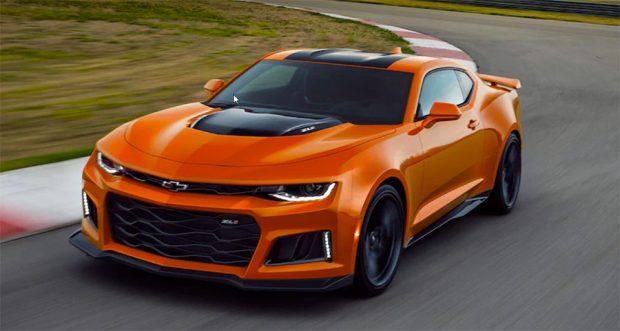Best Muscle Cars
The Final Farewell: Chevrolet Discontinues Its Iconic Camaro

Chevrolet has announced they are stopping production of the Camaro. This leaves the Ford Mustang as the only production V8 muscle/pony car with no signs of stopping production.
The current 6th generation model of the Camaro will continue to be produced until January 2024 at the Lansing Grand River Assembly Plant in Michigan, although no further plans for future editions have yet been revealed by GM.
GM is in the process of transitioning to an all-electric lineup by 2035, investing heavily in both vehicles and autonomous technology. This shift has left less room for traditional gas and gasoline-powered models, leading to their scaling back in favor of electric alternatives.
For GM, this is part of a longer history, dating all the way back to 1966 when the Camaro first entered the market as a rival to Ford’s Mustang. The Camaro has seen five generations since then, though it was briefly discontinued in 2002 before being reintroduced in 2010.
In recent years, the Camaro’s sales have trailed behind those of the more popular Challenger and Mustang models, with GM reporting just under 25,000 sales in 2022 compared to nearly 50,000 Mustangs sold by Ford and 55,000 Challengers from Dodge – though all three automakers have been increasingly directing their focus towards SUVs and trucks.
Ford unveiled a new design for the Mustang last September at the Detroit Auto Show, set for release in summer 2024. This seventh-generation Mustang will be solely powered by gasoline and marks the 58th straight year of production for the model, standing out as one of the last remaining car models amongst the three major automakers.
Ultimately, the decision by GM to stop production of the Camaro marks an interesting shift for the industry as a whole, as it looks to become increasingly electric and autonomous over the coming years.
This news has not been well-received amongst the Camaro’s large and loyal fanbase, who had held out hope for another generation of the beloved vehicle. Many of its supporters had continued to buy the new and updated iterations of the model in recent years, with some even opting to customize their own vehicles with additions, such as souped-up engines or custom body kits.
There are some dissenting opinions on the matter, with some believing the discontinuation of the Camaro will open up more opportunities for the Mustang in the future. Without the presence of the Camaro to rival it, Ford could have an edge in the market and can focus on creating a unique model tailored to the needs of its customers.
It remains to be seen how GM’s decision to move away from traditional muscle cars will impact the industry in the long run, although an apparent side effect is a need for competitors to rely on unique designs to stand out. This may be true not just for the Mustang, but for any potential new muscle car models that may enter the market in its wake: they need to have something that sets them apart from the crowd, making them desirable to drivers both old and new.
Still, the Mustang has evolved over the years, with everything from hybrid technology to 10-speed automatic transmissions being added since it was first introduced in 1964. For now, the Mustang will remain the muscle car icon, but the winds of change may be beginning to blow in the auto world.
The Mustang and Challenger, police in the short term, will now carry the torch for traditional cars in the US. Tesla’s recent announcement of the Model S Plaid hints at a future full of electric muscle cars, with obviously the Demon 170 and the new electric muscle cars coming from Dodge.
As time goes on, we will see which companies decide to make the leap into electric muscle cars, as the industry continues to change and evolve. In the meantime, the Mustang stands tall as the preeminent leader in the classic American muscle car scene, with the hope of a resurgence in the future.
With Chevrolet’s departure from the muscle car market, other companies have a chance to make their mark. Companies such as Hyundai and Dodge have already expressed interest in entering the arena with new muscle car models that could rival the Mustang in power and aesthetics.
These contenders could use their existing technology to create models that are more efficient and powerful than ever before. As the race against time continues, we will soon find out if these up-and-coming automakers are able to create cars that can live up to the legacy of the Camaro and Mustang.
The Camaro’s departure is undoubtedly a challenging moment, but with new automotive technologies emerging every day, there is still hope for the future of the muscle car genre.
If history is anything to go by, changes in regulations and the social climate impacting muscle cars can be traced back to the golden age of the early 1970s. Muscle cars changed dramatically from 1970-75, and while the V8s were the engine of choice, they were a shadow of their former selves. It basically took quite a few years for everything to get back on track. In other words, we are now seeing a similarly dramatic shift where the old templates need to be revised.
This is not to say muscle cars cannot coexist. Just like the classic muscle cars of the late 1960s-1970s are still around and enjoyed by many. High-performance V8 muscle cars will become a more niche pastime, but they will never go away as proven over the last 50 years.






0 comments